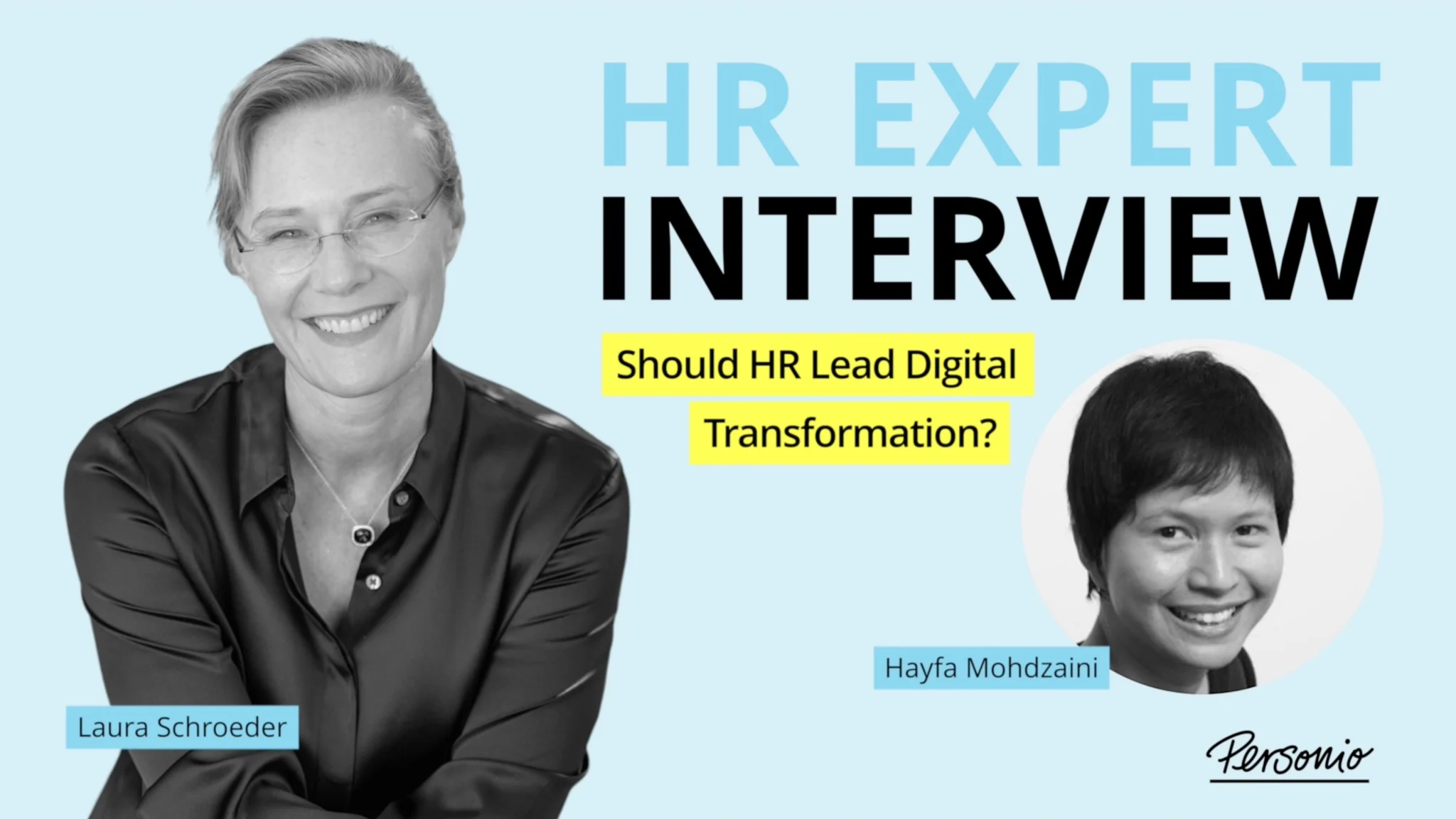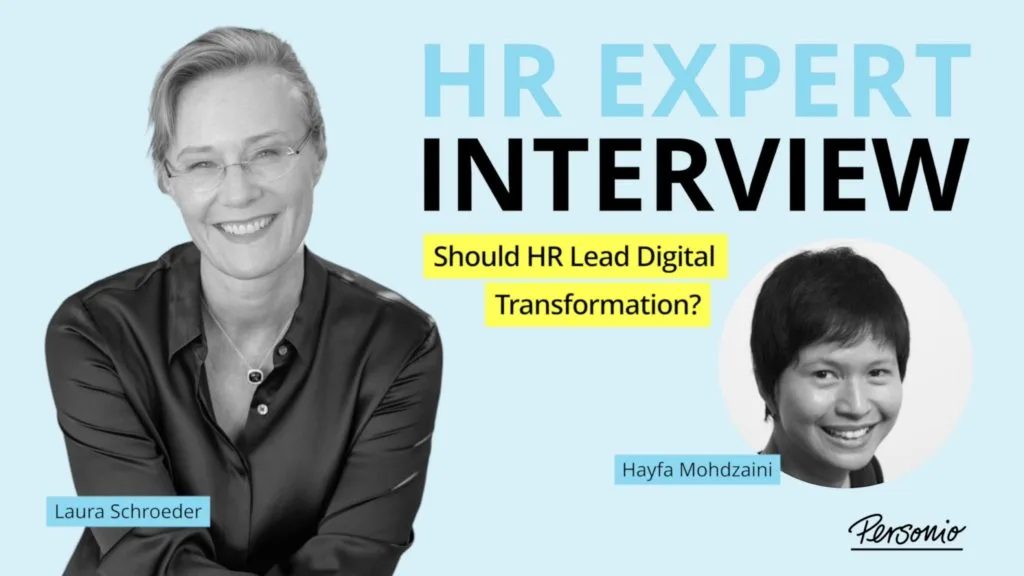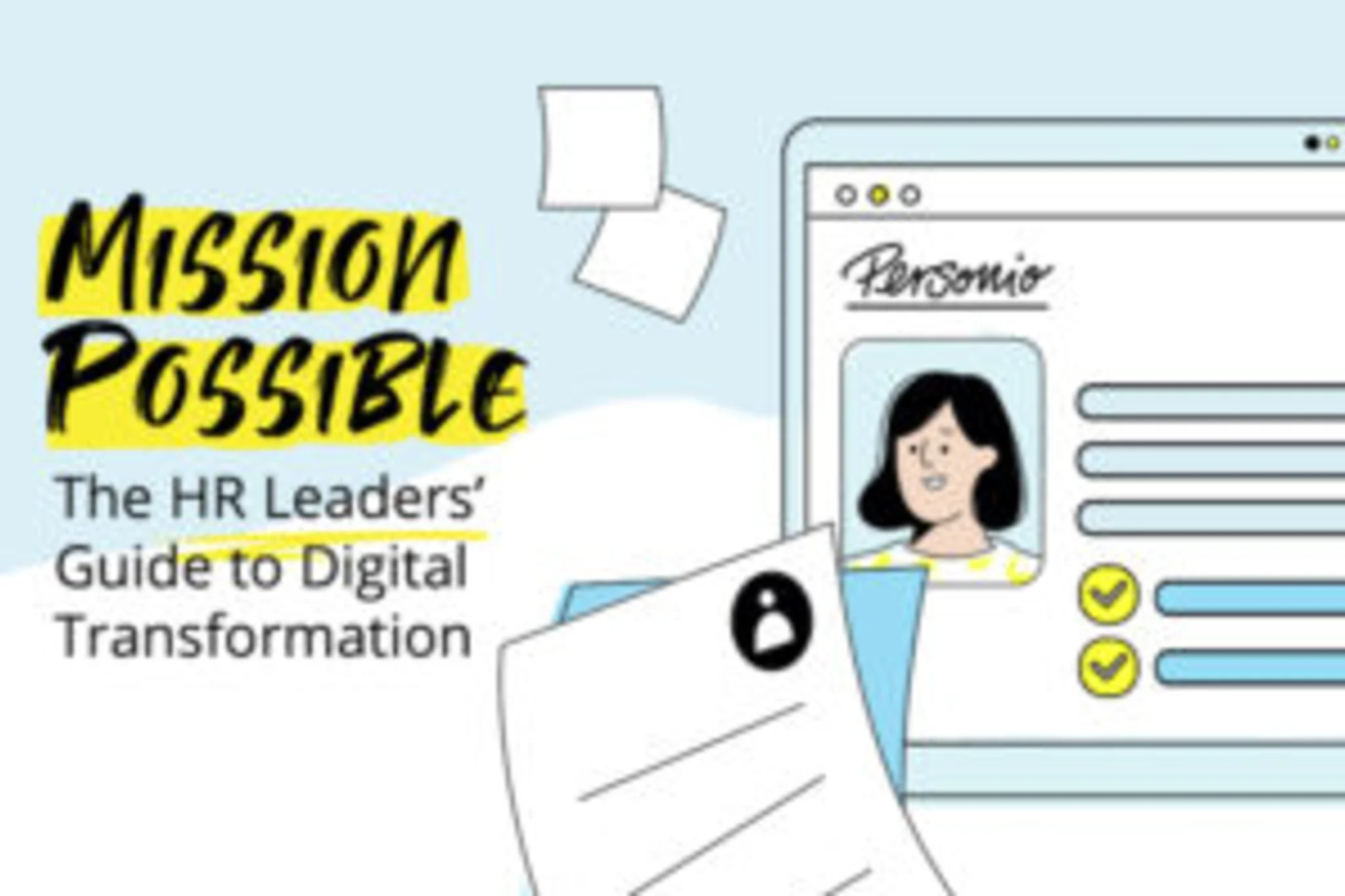
People Strategy Guidebook
A free guide to help power your next great people strategy.
Download our guide to developing your organization’s own people strategy today.29. April 2021
HR Expert Interview: Leading Insights from CIPD’s Hayfa Mohdzaini

Should HR lead digital transformations within organizations? In our latest Expert Interview, Laura Schroeder, Head of Brand and Comms at Personio, spoke with Hayfa Mohdzaini, a Senior Research Advisor for data, technology, and AI, at the Chartered Institute of Personnel and Development (CIPD) to hear her latest insights on the topic.
You can watch the interview in its entirety by clicking this link.A Shift Is Already Occurring
Hayfa's work primarily concerns how HR can play a lead role in digital transformation. Based on her research, she has identified a shift occurring in how HR supports both employees and organizations in becoming more resilient and thriving during and after the pandemic.
Where does organizational resilience truly begin? We explain in this article.
In practice, what that means is highly dependent on exactly how the pandemic changed businesses in the first place (and how they, in turn, responded). In a sense, the pandemic was an eye-opening moment for many businesses, but there is still much work to be done.
A key example that Hayfa gives is the introduction of hybrid work. Here, HR has a role to play in making the process work while balancing business needs, cost savings, and contingency plans, as well as employee needs concerning wellbeing.
"HR’s role, in this particular context, would be in terms of consulting employees and managers, refining HR processes to support hybrid working practices, and coaching line managers to support distributed teams."
All of these things help organizations respond in a more agile way to the needs of their employees, and to various external factors. They not only become more resilient, but they thrive as a result of that resilience.
HR Expert Interview: Should HR Lead Digital Transformation?

We need your consent to load this service!
This content is not permitted to load due to trackers that are not disclosed to the visitor.
Who Needs To Lead Digital Transformations?
With all these changes at hand, it begs the question: Who should be leading digital transformations, as the rapid introduction of new solutions becomes more commonplace?
This acceleration plays heavily in Hayfa’s thinking, especially as it concerns digitization and automation projects within businesses. For her, this means starting projects in the HR function, testing them, and then applying them in the business.
One example she shares is a retailer that needed to increase its hiring by 20% in a short period of time. They turned to an AI, text-based mobile chat function, to help conduct first stage interviews of applicants.
Not only did this have a positive effect on overall candidate experience, but it ended up saving 8,000 hours of time for line managers on the whole.
This is a fantastic example of what Hayfa illustrates as an HR use case using technology for the business to apply that solution elsewhere (where it makes sense). In this way, HR takes the lead when it comes to not only digitizing overall but digitizing strategically.
How Do You Elevate HR?
Hayfa sees an expanded role for HR to play when it comes to technology purchase decisions, specifically outside of HR, that can have a positive effect on the organization as a whole.
As she puts it, “I see HR having a role [here] where it is expected that the number of people who are needed to do work will change, and being involved early on in the process means that we are not fire fighting and we are looking and planning ahead.”
Essentially, having a holistic overview of the organization allows HR to help make technology solutions that solve for time rather than take time. This comes down to a key concept: attention fragmentation and micro delays.
Rather than introducing solution after solution to solve an issue, HR can be involved in helping to invest in thoughtful and meaningful solutions, which then further their ability to help plan ahead and help the business.
Interested in learning more about attention fragmentation? Here’s what you need to know.
Ultimately, this means that HR has the chance to “speak with employees, to consult with them, because when employees are consulted early on in the process, they are more likely to buy in to the technology decisions.”
In short, solutions are only solutions when they are solving problems rather than causing new ones. This is true even when that new problem isn’t as visible, which is often the case when it comes to things like micro delays in an organization’s working processes.
Strategic Insights for Digital Transformations
Hayfa makes things quite clear in her message to businesses and their HR functions.
Her recommendation is such: “Free yourself from routine tasks, as much as possible, so that you can dedicate the time to be an effective business partner. That means leaning on technology to augment your role, what processes can be automated, what can be simplified, and what you can stop doing.”
An HR business partner is one that is doing all of these things, responding in times of crisis, looking ahead to solve these problems before they even arrive, and understanding which solutions save time to make room for unlocking productive potential.
To hear even more, and to hear how the CIPD defines becoming an HR business partner, please feel free to watch the full Expert Interview right here.
